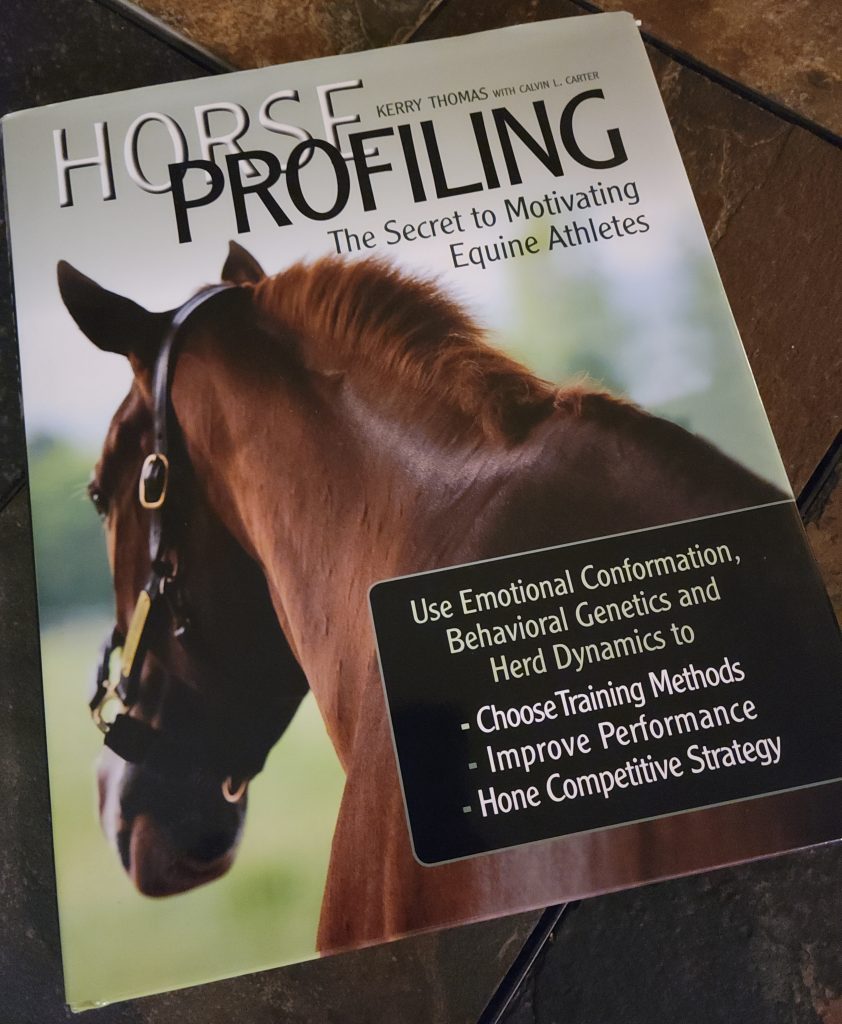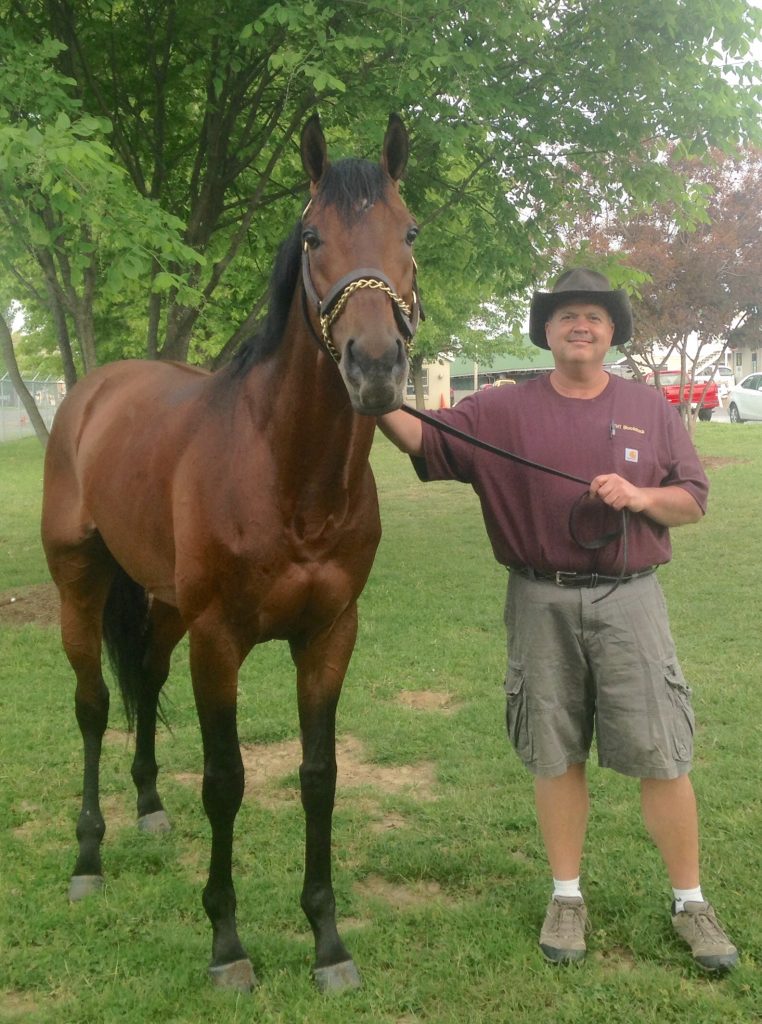
The next offering from Past The Wire’s “Author’s Corner” is a fascinating book by herd dynamics and bloodstock expert Kerry Thomas. Observing sentient equines in the west gave inspiration to a course of study and techniques that every horseman and horsewoman should practice.
By Maribeth Kalinich and Kerry Thomas
Herd Dynamics is not a concept that is limited to wild horses on the open range. The same traits seen in the interactions between these horses can be found in bucolic pastures everywhere no matter how many or how few horses are turned out together.
Kerry Thomas will tell you that even when a horse resides alone, he will display the innate traits that would determine his status in a herd. His personality, his attitude, and particularly his sensory awareness of everything going on around him and his responses to those stimuli are factors that can be used in selecting a horse and choosing a course of training that will lead to success.
Originally from southeastern Pennsylvania, Thomas went west to Montana and Wyoming right after high school, planning to study mountain lions.
Thomas first developed his insight into herd dynamics observing wild herds of horses. Thomas realized that what is inside the horse – his “emotional conformation” – and not what is outside – “physical conformation” – is what governs herd dynamics. Thomas determined that this was the basis for everything horse—whatever role a horse plays in a human environment, his emotional conformation dictates in large part his success or failure regardless of breed or the sport/job in which the horse participates.
“Little by little I got into doing independent field research. Over the years I did a lot of interesting study on predator – prey interaction,” he said. “I became very fascinated with these horse herds, especially the Pryor Mustangs in the Pryor Mountain Range. I began to study the psychology and I began to realize it wasn’t the physicality that allowed them to survive, it was their emotional intelligence that allowed the lead horses to bubble up and lead the herds,” Thomas told the East Coast Equestrian News.
Focusing on this research Thomas identified a system of emotional profiling that enables him to determine a horse’s performance tendencies, and then began to develop ways in which horses can be mentally conditioned toward a given goal. Already used by some of the leading racehorse training and breeding programs in the world, Thomas has now provided a book that explains this unique way of analyzing the psyche of the equine athlete for all horses, and particularly those in competitive careers where performance is a primary focus. It is Thomas’ intention that his work will enable top equine athletes to perform their very best while living happy, contented lives.
Analysis of herd dynamics can also be incorporated into breed programs. In addition to breeding for conformation, this information can assist in breeding for emotional intelligence and sensory soundness to compliment physical attributes.

Photo of Kerry Thomas and Majestic Harbor courtesy Kerry Thomas
Kerry’s Corner
Horse Profiling, The Secret To Motivating Equine Athletes, started to come together, as do many books, over a long period of time. As I continued to develop, study and design applications focused upon the individual horses’ psychology built around the fabric of the herd dynamics, my early failures in those applications, eventually began to lead to key breakthroughs. I felt I was on to something; I knew there was a way to apply it, I just couldn’t give up, I became driven to peel back the veil to look into the window of the invisible. I wasn’t afraid to risk everything I had in search of that one grain of sand that would one day represent an entire beach, if I were willing to see it through. I was then, and still am now.
The Thomas Herding Technique at its inception was a loosely knitted together cohesion of what I found in study and research with what I theorized and over time practical applications emerged. The large collection of notes and experiences from those times were collected into a book that more people could be reached, a book that has become the earmark foundation of all that we continue to develop, study and research to further advance Herd Dynamic Profiling, which has now expanded to an international horse world in all disciplines.
The Technique uses emotional conformation, behavioral genetics and herd dynamics to choose training methods, improve performance and hone competitive strategy.
Interesting anecdotal story about the name, Thomas Herding Technique; a friend from long ago happened upon me in a field observing some horses and saw me kneeling in what has become at horse sales a customary pose I’m seen in. He yells out jokingly, “hey Thomas, what kind of herding technique is that?” and laughed. I laughed and replied that it was my Thomas Herding Technique. I kept that name to honor him after his tragic passing.
Since the release of the book, we have as can be expected, continued to build upon the foundation represented within it. The book will always serve as that initial and all-important introduction to the work that was done up to the point of its release, as well as the sturdy footer from which all that has come, and is yet to come, has been layered. There will be at some point, perhaps in the not-too-distant future, a book two, to share the exciting revelations and what some in the industry have called “revolutionary”, work we’re doing in herd dynamic profiling and behavioral genetic research.
The Thomas Herding Technique has since been changed to THT Bloodstock, with a new website of the same name, where you can find a collection of writings, advanced service options and our decade of work evaluating the Kentucky Derby horses.
“Herd Dynamic Profiling; Every Horse, Every Discipline, Everywhere…” Kerry M Thomas
Kerry’s Corner – Handicapping with Herd Dynamics
Ever since I turned my passion for horse racing and the study of how the psychological athlete impacts physical performance, I started getting asked about handicapping races. There is an absolute correlation between scouting herd dynamic characteristics, the depth of their athletic psychology as prospects, and scouting the same in the horses in the starting gate as you plan your plays as a handicapper. The irony for me has always been, I don’t gamble, I’ve never handicapped a race for the purpose of placing a financial wager; I leave that to THT Bloodstock business partner Pete Denk who is quite skilled in this department. The fact that I don’t bet is just a personal choice, I am certainly not opposed to it and totally understand the thrill of it, yet I have been to Vegas on more than a few occasions and never once had the urge to drop a buck on a table or throw a quarter into a slot machine.
That said, in truth we do utilize herd dynamic profiling and patterns of motion analysis to “handicap” perhaps the biggest race of the year and we have done so now for 9 years, 2020 marking our 10th Kentucky Derby. Though I may not slide my dollars across the ticket window, the very difficult task of developing a herd dynamic hierarchy and an “order of finish” based upon it, is indeed handicapping with the herd dynamics. The manner in which we do it, the process and the consideration of many variables such as combining physical data cross-checked with what we’re seeing and more importantly what we’re feeling, is for me keystone information I would use every time I wanted to make an investment toward outcome. Click to read the remainder of this article in Past The Wire.
_______________________________________________
Read more of Kerry’s articles in Past The Wire’s Kerry’s Corner.
Author, Kerry M. Thomas’ book, is available at Amazon, Trafalgar Square Books and other selected online and retail book sellers.
More information about herd dynamics and sensory soundness can be found at www.thtbloodstock.com. Based in Kentucky and Cochranville, PA, Thomas is available for individual horse evaluations, as well as clinics and seminars.



